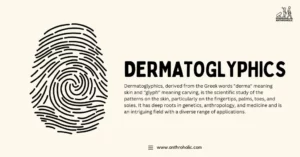AI Answer Evaluation Platform Live Now. Try Free Answer Evaluation Now
Deculturation
Deculturation, a term often mistaken for acculturation, refers to the process where a person, group, or society loses their original culture due to oppression, colonization, or other factors that lead to cultural disruption [1]. Unlike acculturation, where there is a process of learning and adapting to a new culture, deculturation involves the unlearning of one’s native cultural aspects, leading to a state of cultural void.

The Process of Deculturation
Deculturation follows a multi-phase process:
1. Cultural Disruption
Deculturation begins with a significant disruption to the established cultural order. This could be a result of colonialism, war, societal changes, or new political systems [2].
2. Loss of Cultural Identity
Following the disruption, individuals lose their cultural identity due to the loss or suppression of cultural practices, languages, rituals, and other aspects of their culture [3].
3. Cultural Void
Finally, a cultural void is formed where the individuals or society no longer practices their original culture but has not yet adopted a new one.
Causes of Deculturation
Deculturation can occur due to a multitude of reasons, including:
- Colonialism: Many colonial practices aimed to suppress native cultures and introduce the colonizers’ culture. A significant example is the Native Americans’ deculturation due to European colonizers [4].
- Globalization: As the world becomes more interconnected, local cultures may get overwhelmed by dominant cultures leading to cultural loss [5].
- Forced Migration: Refugees and other forced migrants often face deculturation as they leave their homeland and culture behind [6].
- Cultural Assimilation Policies: Governments or societies may enforce policies that push for cultural assimilation, thereby leading to deculturation [7].
Impact of Deculturation
Deculturation’s impacts are profound and can affect individuals and societies on various levels, including psychological, social, and political aspects. Table 1 provides a brief summary of these impacts:
| Impact Area | Effect |
|---|---|
| Psychological | Loss of identity, increased stress, and mental health issues [8] |
| Social | Breakdown of social structures, loss of community cohesion [9] |
| Political | Resistance, unrest, and calls for cultural preservation [10] |
Strategies for Countering Deculturation
While deculturation can be detrimental, there are strategies to counter its effects:
1. Cultural Preservation and Revitalization
Efforts can be made to preserve and revitalize cultures under threat. This can include recording languages, rituals, and customs, promoting cultural practices, and establishing cultural heritage sites [11].
2. Education
Educational programs can be established to teach individuals about their culture, promoting cultural pride and continuity [12].
3. Political Advocacy
Advocating for political policies that protect and promote cultural diversity can help counter deculturation [13].
Cultural Void: An In-Depth Exploration
The cultural void created by deculturation is a space devoid of the initial cultural practices, beliefs, and languages that were once intrinsic to the individuals or society. This absence doesn’t necessarily mean the adoption of a new culture, rather it may lead to a state of cultural ambiguity.
Impact on Identity Formation
In the void created by deculturation, individuals may struggle with identity formation [14]. The loss of traditional cultural practices and beliefs which were once the basis for self-definition can lead to a state of identity crisis. The individuals are no longer able to identify themselves with their native culture but are also not completely adapted to the new culture.
Impact on Mental Health
The cultural void and the accompanying identity crisis can significantly impact individuals’ mental health. The struggle to define oneself and the feelings of cultural dislocation can lead to stress, anxiety, depression, and other mental health issues [15].
Impact on Interpersonal Relations
Deculturation can also affect interpersonal relations within a society. The cultural void can lead to a lack of common ground or shared cultural understandings, which are vital for cohesive social interaction. This might result in social fragmentation and misunderstandings within a community [16].
Case Study: Deculturation in Native Americans
A striking example of deculturation is the experience of Native Americans during and after the colonization by Europeans. The indigenous people were systematically subjected to efforts designed to eradicate their culture. This ranged from the forced adoption of Western names, clothes, and religion to the prohibition of native languages and rituals [17].
The impacts of this deculturation are still visible today. Many Native American tribes struggle with preserving their cultural heritage, and the repercussions on mental health, social cohesion, and identity are profound [18]. This example serves as a stark reminder of the devastating consequences of deculturation and underscores the need for strategies to counter its effects.
Mitigating the Effects of Deculturation: A Three-pronged Approach
Counteracting the effects of deculturation requires a comprehensive, multifaceted approach. Three key strategies include:
1. Cultural Education
By educating individuals about their original culture, it is possible to rekindle cultural pride and revive cultural practices [19]. Such educational programs can range from teaching native languages to preserving and promoting traditional customs and rituals.
2. Community Building
Cohesive communities provide a social support system that can help mitigate the psychological impacts of deculturation. By fostering connections within a community, individuals can gain a sense of belonging and shared cultural identity, reducing feelings of isolation and cultural ambiguity [20].
3. Policy Advocacy
Implementing policies that acknowledge, respect, and promote cultural diversity can help combat deculturation. Advocacy for the rights of indigenous and minority cultures is key to protecting these cultures from erasure [21].
Conclusion
Deculturation, a phenomenon often resulting from oppression, colonization, and globalization, has significant effects on individuals and societies. It’s crucial to understand this concept, its causes, and impacts to develop effective strategies to counter it and preserve cultural diversity.
References
[1] Berry, J. W. (2005). Acculturation: Living successfully in two cultures. International Journal of Intercultural Relations, 29(6), 697-712. https://psycnet.apa.org/doi/10.1016/j.ijintrel.2005.07.013
[2] Erikson, E. H. (1959). Identity and the life cycle. New York: International Universities Press.
[3] Eriksen, T. H. (2001). Small places, large issues: An introduction to social and cultural anthropology. Pluto Press.
[4] Thornton, R. (1987). American Indian holocaust and survival: A population history since 1492. University of Oklahoma Press.
[5] Tomlinson, J. (1999). Globalization and culture. University of Chicago Press.
[6] Eastmond, M. (1998). Nationalist discourses and the construction of difference: Bosnian Muslim refugees in Sweden. Journal of Refugee Studies, 11(2), 161-181.
[7] Joppke, C. (2007). Beyond national models: Civic integration policies for immigrants in Western Europe. West European Politics, 30(1), 1-22.
[8] Tadmor, C. T., & Tetlock, P. E. (2006). Biculturalism: A model of the effects of second-culture exposure on acculturation and integrative complexity. Journal of Cross-Cultural Psychology, 37(2), 173-190.
[9] Portes, A., & Rumbaut, R. G. (2001). Legacies: The story of the immigrant second generation. University of California Press.
[10] Wright, S. C., Taylor, D. M., & Moghaddam, F. M. (1990). Responding to membership in a disadvantaged group: From acceptance to collective protest. Journal of Personality and Social Psychology, 58(6), 994.
[11] Amadasi, G., & Perego, E. (2018). The preservation and conservation of archaeological sites. International Journal of Conservation Science, 9(1), 61-74.
[12] Banks, J. A. (1993). Multicultural education: Historical development, dimensions, and practice. Review of Research in Education, 19(1), 3-49.
[13] Meer, N., & Modood, T. (2009). The multicultural state we’re in: Muslims,‘multiculture’ and the ‘civic re-balancing’ of British multiculturalism. Political Studies, 57(3), 473-497.
[14] Erikson, E. H. (1959). Identity and the life cycle. New York: International Universities Press.
[15] Bhugra, D., & Becker, M. A. (2005). Migration, cultural bereavement and cultural identity. World Psychiatry, 4(1), 18-24.
[16] Berry, J. W. (2005). Acculturation: Living successfully in two cultures. International Journal of Intercultural Relations, 29(6), 697-712.
[17] Thornton, R. (1987). American Indian holocaust and survival: A population history since 1492. University of Oklahoma Press.
[18] Garrett, M. T., & Pichette, E. F. (2000). Red as an apple: Native American acculturation and counseling with or without reservation. Journal of Counseling & Development, 78(1), 3-13.
[19] Banks, J. A. (1993). Multicultural education: Historical development, dimensions, and practice. Review of Research in Education, 19(1), 3-49.
[20] Phinney, J. S., Horenczyk, G., Liebkind, K., & Vedder, P. (2001). Ethnic identity, immigration, and well-being: An interactional perspective. Journal of social issues, 57(3), 493-510.
[21] Kymlicka, W. (2002). Contemporary political philosophy: An introduction. Oxford University Press.




